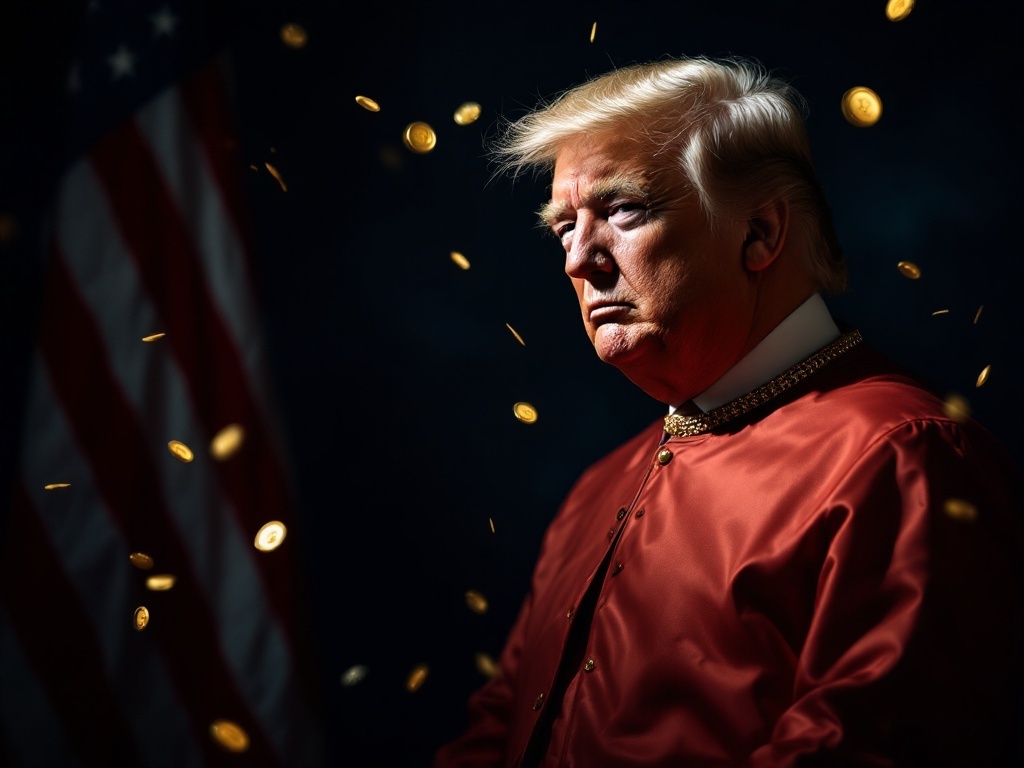How Trump’s memecoin became a cash cow
By Alexander Bechtel and Maximilian Vargas
With his memecoin, Trump could profit twice: In addition to collecting millions in trading fees, companies close to Trump also control tokens currently worth around 14 billion US dollars, which are gradually being released.
Shortly before his inauguration, Donald Trump caused quite a stir: The now incumbent US president surprisingly launched his own memecoin, which became one of the largest cryptocurrencies within a few hours. The question now is whether and to what extent Trump and his entourage are benefiting financially.
While Europe slept and Trump spent the evening in Washington with leading representatives of the US crypto industry, the launch of the $TRUMP token on the Solana blockchain was announced via his social media channels.
The hype could hardly have been greater. In the first few days after its launch, the price of the cryptocurrency rose from six dollars to more than 75 dollars, reaching a market capitalization of almost 15 billion dollars in the meantime. This made $TRUMP not only one of the largest tokens on the entire crypto market in one fell swoop, but also more valuable than companies such as Lufthansa or Birkenstock. In the meantime, however, the value of the memecoin has corrected sharply and is now at a price of 18 dollars, which still corresponds to a market capitalization of around 3.5 billion dollars.
One of the biggest criticisms of Trump’s token is the distribution of the total supply. The current market capitalization is distributed across just 20 percent of the tokens. Only these are currently freely tradable, while the remaining 80 percent – worth almost 14 billion dollars – are initially locked in a crypto wallet and cannot be transferred or sold. From May onwards, a fixed proportion of the locked tokens will be automatically released each month and thus become tradable. Full unlocking will take three years.

According to official information, these tokens are owned by CIC Digital LLC, a subsidiary of the Trump Organization, and Fight Fight Fight LLC, a recently founded company. Whether Trump and his family are directly behind these entities cannot be said with certainty at present.
Given the current price pressure, it could be difficult to actually realize the current value of the tokens. Nevertheless, the Trump team has probably already generated millions in revenue by providing liquidity on decentralized exchanges such as Meteora.
The reason: in contrast to traditional exchanges, where buy and sell offers are brought together via an order book, decentralized exchanges rely on the so-called Automated Market Maker (AMM) design. Trading is not carried out directly between two parties, but via liquidity pools consisting of two tokens and controlled by smart contracts – i.e. blockchain-based computer programs.
One of the liquidity pools on Meteora, for example, makes it possible to exchange the $TRUMP token for the US dollar stablecoin USDC. Anyone wishing to purchase a token pays USDC into the pool and automatically receives the corresponding amount of $TRUMP tokens – without the need for a counterparty. For this trade to function smoothly, users are required to deposit their tokens in the pools and thus provide liquidity. In return, these liquidity providers receive a share of the trading fees generated.
In the case of the $TRUMP token, the Trump team controlled a large part of the liquidity on Meteora from the outset – and continues to do so to this day. Blockchain data shows that a trading volume of over 50 billion dollars was generated via the token in the first week after its launch alone. This presumably enabled the Trump team to earn trading fees of around 70 million dollars in the first week after the launch alone – an amount that, according to blockchain data (here, here, and here), has not yet been withdrawn from the known wallets (as of 02.02.2025).
—
This article was originally published in Frankfurter Allgemeine Zeitung (FAZ) in German. For the original version, click here.
Disclaimer: The contents of the article reflect the private opinions of the authors and not necessarily those of DWS.
